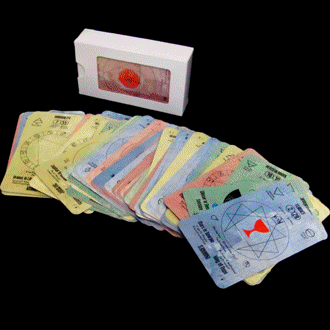Perhaps the inventors of the Tarot cards intended that they should be understood as a graphic summation ofthe principles of the Qabalah, or perhaps not. At least there is no written evidence to suggest this, and the great Jewish scholar of the Qabalah, Gershom Scholem, is probably correct in his assertion (however deprecatory) that the connection was made by late nineteenth century English and French occultists. One way or the other, the interlock of Tarot and Qabalah is so precise that the systems are mutually explanatory. And actually, the likelihood that the two systems developed independently gives far greater authority to the ideas of both because it points toward their mutual roots in universal Truth.
Yet, a great deal of nonsense has been written about both the Tarot and the Qabalah, the sale ofa large percentage of occult literature being a tribute to the public’s gullibility.
Despite increased public interest, surprisingly little attention has been paid to the Tarot by academia, though the cards are a veritable gold mine of art history and metaphysical philosophy.
What the Tarot represents is an allegorical journey, each card being the experience of something (a universal energy) along the way, rather like the episodes in Dante’s Divine Comedy, Bunyan’s Pilgrim’s Progress or even Tolkein’s Trilogy of the Ring. And the idea of an adventuresome and perilous journey through unknown territory was typical of medieval literature. The analogy here is that to travel in the middle ages was as dangerous and difficult as to travel the inner paths of the Mysteries.
Expect from Robert Wang’s Qabalistic Tarot
This deck is similar to The Golden Dawn Tarot deck















